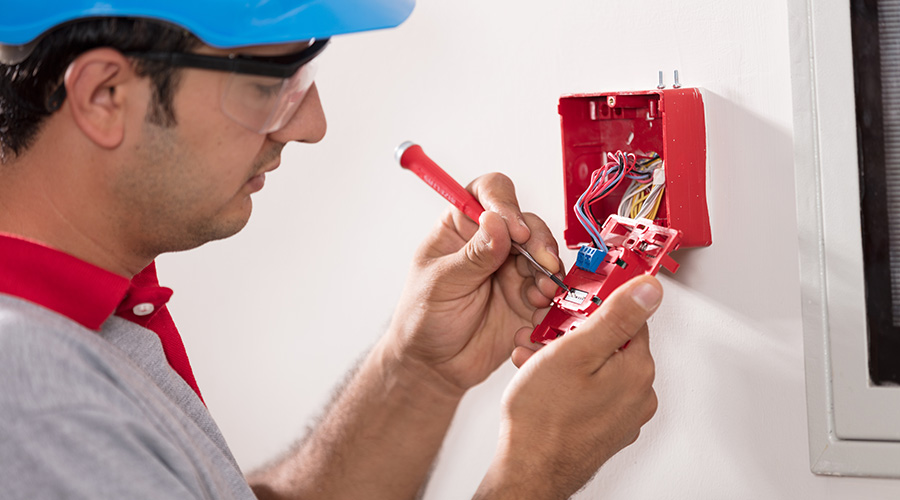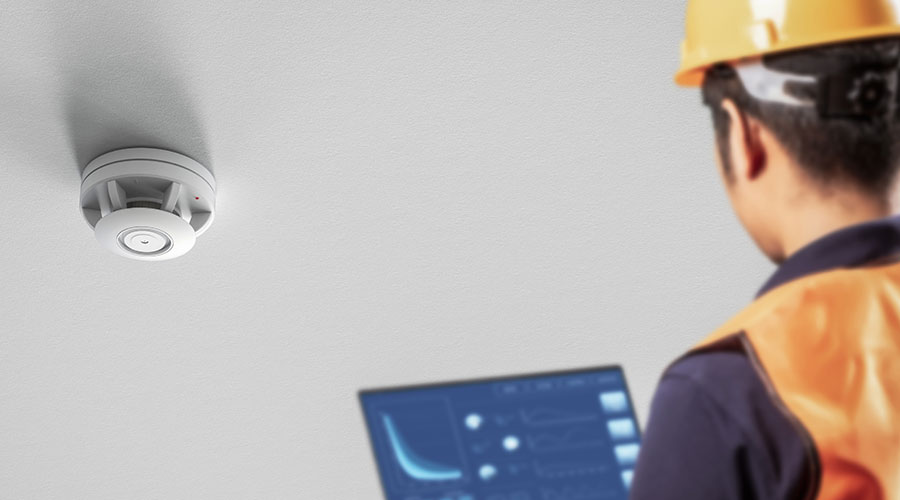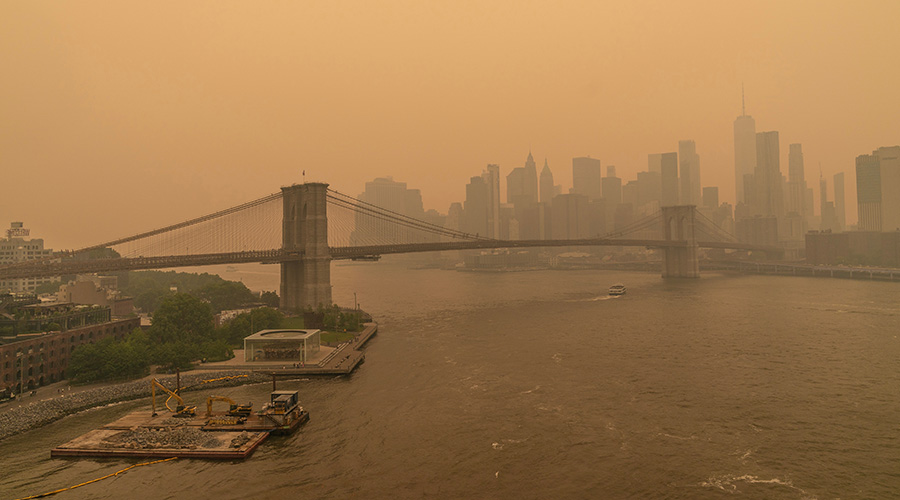Stopping Fire Where it Starts
By preventing the spread of fire throughout a facility,
firestop technology and products aim to minimize damage
Picture this. Your building has a transformer substation in a concrete room remote from operations. Computer operators on the night shift smell smoke and run to the area, only to find that the source is an electrical fire in the substation raceway penetration through the wall into the building.
The location is too remote and too hot for anyone to enter and use the portable CO2 extinguishers located nearby. By the time firefighters arrive, damage is extensive and spreading, an explosion has occurred that released toxic gases, and the firefighters have a difficult time extinguishing the blaze.
A nearby generator also was damaged, so the distribution system, lighting and computer network are without power for days while very costly repairs are made.
Firestops: A Closer Look
A very different outcome could have resulted if firestop systems had been in use. Firestops effectively fill the spaces around such elements as conduit, cable ways and piping where they pass through fire-rated walls or floors. They provide an important adjunct to portable, manual extinguishers and fixed automatic sprinkler systems.
National statistics show that a fire breaks out in a structure every 60 seconds and that damages cost more than $8 billion a year — certainly a substantial risk management and cost-reduction opportunity that needs maintenance and engineering managers’ thoughtful attention.
Firestop products detect heat or fire and automatically discharge or expand at specific locations they were designed to protect. They can be connected to a fixed fire-alarm system so that they trip an alarm and identify a location even while fighting the fire. In this latter respect, they work like the stationary building sprinkler system.
Code Considerations
The current construction codes now require firestops for all wall and floor penetrations and joints. While older, existing construction is not included in the codes, many managers are retrofitting their facilities to reduce risk to life and property of fast-spreading fire and smoke and also to gain advantage of lower premiums.
Some standards are used for performance testing of firestop products. An important distinction is that testing authorities like Underwriters Laboratories
An example of a complete system is the fire-rated wall or floor, an item or means passing through it, and the sealant or other means to prevent smoke or fire from passing through it.
Some key firestop system testing standards for through penetrations and membrane penetrations are: ASTM E 119; UL 263; NFPA 251; ASTM E 814; and UL 1479.
Standards for joint penetrations are: ASTM E 119; ASTM E 1966; ASTM 1399 for cycling; ASTM C 719 or UL 2079 for adhesion or cohesion; and NFPA 96 for grease ducts.
In new construction and remodeling, the design architects are responsible to the owners for recommendations that meet existing standards and codes, and the general contractor is responsible for installation according to the accepted standard.
These groups usually will employ a specialty firestop subcontractor to examine the specifications, develop appropriate product recommendations — including detailed designs — and coordinate with building owners and managers, architects, general contractors, fire marshals and building inspectors for that part of the work because it is so specialized.
There remain many system combinations that have not been tested and for which there are no existing standards. In such cases, specialty firestop contractors and laboratories can assist the owner by developing a suitable testing method and standard for approval by the regulatory organizations.
The Firestop Contractors International Association’s Manual of Practice, Section 07840, contains an example of important code information and lists of approved products. Generally, firestop material must be the equal in fire rating to the fire-rated wall or floor that is penetrated. Submittals for listing includes product data and specifications, certification of the testing agency as to the testing results, evaluation reports and backup documentation.
Other parts of this section cover product storage and handling and execution. The execution practices include installation techniques, such as masking identification of the penetration seal, and cleaning.
Quality assurance requirements include the experience of the installer — five years — a manufacturers’ representative present at the beginning of the installation for training and guidance, and verification of compatibility of the firestop material with the substrate to which it is applied and the penetrating items.
Section 01340 of the manual contains procedures for submittal of products for testing. Firestops are meant for short-cycle applications and are not appropriate for furnace fire doors or other locations where high levels of heat are continuous.
New Technology
Managers have access to more than 3,000 tested firestop products. No single firestop product will work in all cases. Some firestops work by intumescence, or the ability of the product to expand in the presence of heat. Some of these products sense heat as low as 115 degrees.
Polymerized tubing can be directed to four different points from one portable source of automatically released foam, dry powder for electric power distribution, or clear gas for computer systems and other sensitive electronics such as telephone switchgear.
Of particular interest are firestop product offerings for two key applications — through penetrations and in remote areas of facilities. Among the technology options for wall and floor penetrations are these:
(UL) test only complete systems.
-
Fire putty sticks. These products are designed for molding around cables, conduit and pipes. They maintain pliability and can be reused if some of the penetrating items are changed, removed or added to.
- Firestop caulk. This product is applied with hand caulk gun. It will not sag and can stand some movement. Some grades have high intumescing characteristics that work well with insulated or plastic pipe and meet UL specs for four-hour rating.
- Firestop pillows. These products are designed for large openings, many without wire reinforcement required, around cables, cable trays, blank openings or several penetrating items. They meet UL tests for systems up to three hours.
- Fire putty pads and inner stops for electrical boxes. The pads surround electrical boxes and maintain the fire rating of walls for one to two-hour rating with 1&Mac218;8-inch thickness. The stops are mounted into the inside back wall of an electrical box and form a hard char when exposed to heat, lowering the temperature of the protected parts and openings. They also are sound absorbent.
- Receptacle and switch firestops. These gaskets are used with either plastic or metal, single or double wall-plug receptacle and light-switch cover plates. They expand and seal openings with a hard char in the presence of heat. They are UL classified to a one- to two-hour rating.
Among the options for firestop technology in remote areas of facilities are portable fire extinguisher firestops. These products are automatic extinguishing firestops similar to portable manual fire extinguishers for buildings or outside use. These automatic extinguishers have an attached hose that is permanently under pressure instead of the usual sealed hand valve and nozzle.
A hose — as many as four different hoses on one tank — is fastened into a fixed location from 12-40 feet away and aimed at a possible fire source.
If a fire or 115-degree heat reaches the hose, it detects the source and automatically releases the extinguishing fluid at the same time. A connection to the building’s stationary sprinkler system electrical circuit can simultaneously energize a light signal or audible alarm.
The product can supplement conventional water sprinkler systems. For example, where flooding from a building’s sprinkler system would damage computer closets, the portable device charged with clear gas can be used. It will not affect the electronics because it is a dry gas and doesn’t require any cleanup. A dry powder version can be installed in critical areas near a gas- or oil-fired boiler.
In addition to proper installation methods, there are code requirements regarding frequency of checking and recharging to ensure this system maintains its proper functional capability.
There are many applications for this automatic extinguishing firestop product. Among them are HVAC equipment rooms, air-compressor rooms, elevators, telephone exchanges, transmitters, towers, combustible storage areas, paint lockers, boiler rooms, off-road landscape and construction equipment, bank safes, safe deposits, ATM machines, and waste stores.
Finally, for building joint openings, managers might consider firestop spray, which is used for large openings between the inside of the exterior walls and the floors. These materials must meet the tests for fire resistance of building joint openings.
With rewards that include increased occupant safety, continued gainful use of building space and enhanced property values, firestop products give managers good reason to take a serious look at a building’s original structure, as well as past and future upgrades, for proper firestop specifications. Such investigations and investments almost certainly will have a tremendous payback.
Firestop Resources
Managers seeking information on firestop products and applications can contact these organizations:
|
Related Topics:











